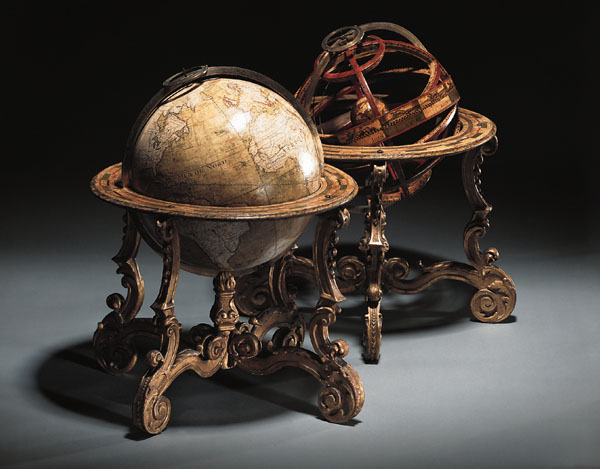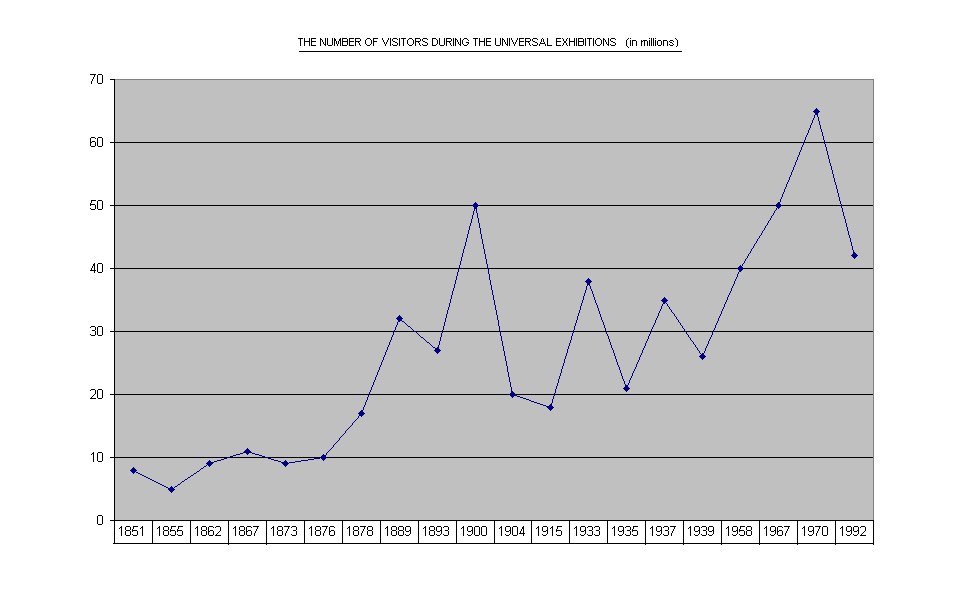The Universal
Exhibition

The Universal Exhibition |
|
Definition : Whereas in France, the exhibitions were closed to foreign goods, England replied by opening the first international exhibition which showed industrial expansion in London in 1851, and whose « Crystal Palace » was the first famous building, like the Eiffel tower in Paris. In the twentieth century, appeared the formula of « the national leagues » or « firms ».These were powerful industrial coalitions which were represented, both international and competing, in spite of general subjects like « men’s earth » in Montreal in 1967 or « Progress and Harmony » in Osaka in 1970.
Exhibition of 1867 |
||
|
Paris hosted the Universal Exhibition in 1867, which presented
the “Palace of Industry” as its major attraction. This Palace was
482 metres in length and 370 metres in width, 140000 square metres
in superficy; this building had the shape of an ellipse. The Palace
of Industry was nicknamed “The Gallery of Machines” by the public. Gustave Eiffel took advantage of the Universal Exhibition in order to settle his position in French engineering and, to obtain the trust of his elders. In 1866, the chief engineer suggested that Eiffel should be the one in charge for the building of the metallurgy section of “The Gallery of Fine Arts”. Once the Exhibition was finished, he built a lot of bridges and others projects. And a short time before the Exhition of 1878 , he carried out a progamme he felt very strongly about : “the bridge on the Douro (french)” in Portugal, which made him very famous in the world and gained him the congratulations of the famous engineer Weyrauch.
|
|
1878 |
||
In 1878, to illustrate the french upright, Paris hosted
a Universal Exhibition once again. It took place on the
hill of Trocadero and on the military esplanade, the square of the
Exhibition reached 700metres in length and 350 metres in width and
was made of several parallel metallic halls from two big galleries
realized by Henri Dion, the engineer of the Exhibition metallic
works. As he had become quite famous since his construction of bridges,Gustave Eiffel obtained for his company the building the great vestibule of the palace of Exhibitions, both parallel to the Seine and facing the Trocodero, but these didn’t appeal to the people, the Eiffel’s firm built the ward pavilion of the gaz company of Paris, which was a big hall of 3140 sqare metres with a glass ceiling 13 metres high. Gustave Eiffel presented a new invention for building, the crane without foundations. |
|
|
In this way, the Universal Exhibitions brought him particular outstanding among the
most famous engineers, among whom Krantz, Weyrauch and Guyenet, but in addition
they caused Eiffel’s workshops to be well-known to the public.
Gustave Eiffel was able to stand out with perseverance, work and some instinct relating to the advertising.

Louot Romain et Boscaro Anthony